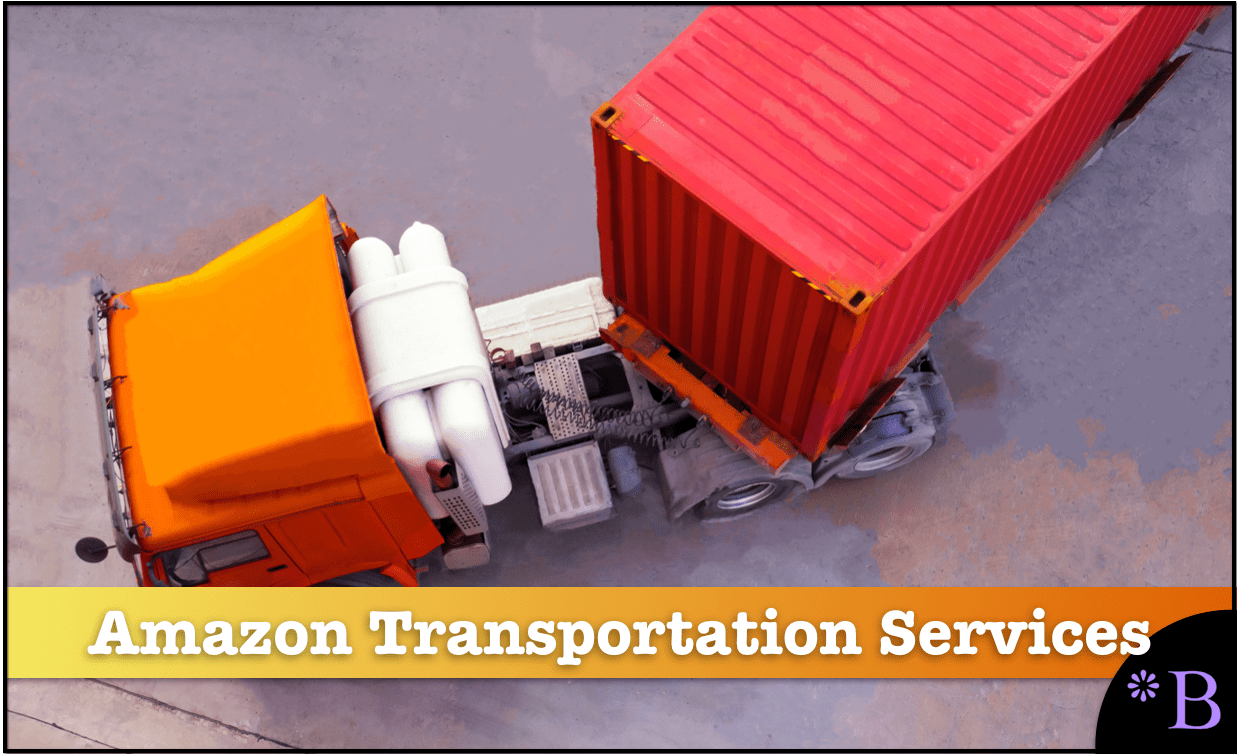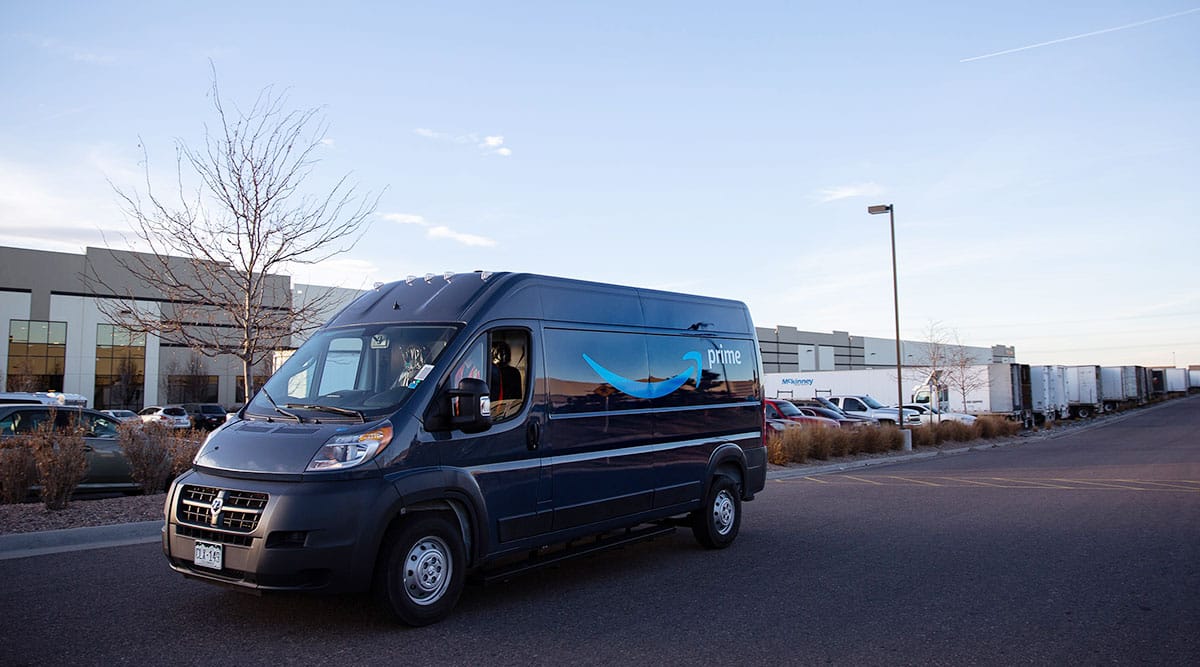How to Best Understand Amazon Transportation Services
Executive Summary
- Amazon Transportation Services is yet another market Amazon is about to disrupt.
- There are important implications for the movement of Amazon into this market.

Video Introduction: What the Amazon Transportation Service is About
Text Introduction (Skip if You Watched the Video)
The Amazon Transportation Service is causing significant changes in the supply chain market, and dislocation among the freight transportation providers. Amazon is again using its monopoly power against other very large powerful entities like UPS, FedEx, trucking companies, and freight airlines. We project this will cause even more changes in the future. You will learn what these changes are and why Amazon is entering this market.
What is the Amazon Transportation Service?
Amazon has for a long time been at the forefront of logistics with its Amazon Fulfillment Services has moved into a new space. They have called this trucking division Amazon Transportation Services.

The first indication that most people may have observed of Amazon getting into transportation has been observing that local delivery began to be from vans with the Amazon logo on the side rather than the logo of one of the parcel delivery companies.

Amazon is promoting small entities to take the role of what amounts to a franchisee as part of the Amazon Transportation Service.
But while this is the most visible sign, there is much more going on behind the scenes with Amazon Transportation Service.
Overall, the question that is naturally raised is what will be the future impact of Amazon Transportation Services on trucking.
How Amazon Transportation Services will Change Trucking
Amazon Transportation Services has its trucks, but it does not intend to own a 100% private fleet. In fact, up to this point, the tractors and trailers that Amazon Transportation Services does own are used exclusively to move freight between Amazon locations. Trucking from Amazon locations to the parcel carriers is where Amazon uses outside trucking companies.
Amazon is leveraging its technology prowess and has already introduced an app that matches truck drivers with shippers, in a way allowing for the circumvention of the big trucking companies. This is in all frankness something that the trucking industry has been relatively slow in developing, even though the benefits are quite obvious.
Once again, the benefits of Uber for trucks would be a significant change for the trucking business and owner operator trucking.
Amazon Transportation Services and Parcel Delivery
As I pointed out the most visible sign that Amazon shifted into transportation has been the use, of Amazon vans for parcel delivery. Amazon is not only delivering with vans but how has an air cargo fleet which will move volume away from parcel delivery companies that we have come to associate with Amazon packages. It is doubtful that Amazon’s cargo fleet is meant to carry non-Amazon parcels. But this move does signal a reduction of UPS and FedEx’s business from Amazon.
Although little discussed, the increase in online shopping, which was spearheaded by Amazon is transferring some of the driving that was done by consumers to parcel post companies.
What is agreed by transportation experts is that Amazon is extremely well-positioned to move into transportation. They maintain the following killer combinations:
- Amazon as the Freight Source: They have an enormous amount of freight. Meaning they don’t need to seek outside business to have a very large transportation infrastructure.
- Technology Advantage: With their web technologies they can access any number of owner operators with some load board, similar to but most likely far more advanced than the Landstar Load Board. This would eliminate any broker fees and would allow Amazon Transportation Services to access flex capacity.
- Connecting to the Amazon Fulfillment Services: Amazon already maintains a highly successful logistics organization in Amazon Fulfillment Services. Amazon Transportation Services is a natural extension of this competency.
Why is Amazon Diving into Transportation?
In most cases entering a business is performed to gain profits. However, trucking is not a particularly profitable industry. On the other hand, Amazon has such a low cost of capital due to the strength of its stock price, that it is fairly easy for Amazon to expand in any direction it sees fit.
This move appears to be driven by the following primary factors:
Factor #1: To Provide Amazon with More Control Over its Transportation
With a dedicated or private fleet of some percentage of its transportation, it can reduce coordination costs.
Factor #2: To Guarantee Access to Transportation
Trucking volumes are steadily increasing. According to the ATA, the total miles driven will increase by 38% from 2012 and 2023. The total volume will increase by 26%. Amazon’s trucking statistics will increase far more than this over this period.
Factor #3: To Reduce the Shipping Expense, it Incurs
Amazon takes close to a billion dollars in shipping cost losses a year on shipments that are covered under free shipping. Think of all the customers that have Amazon Prime.
Factor #4: Adjusting for Amazon’s Supply Network Changes
Amazon has reconfigured its supply network due to many intensive supply network design analyses. What these analyses showed is that Amazon needed smaller DCs within a reasonable proximity to population centers (i.e., customers). This prepositioning of stock would allow it to fulfill very quickly at low transportation costs.
As was stated previously, the tractor-trailers that Amazon now owns, have been dedicated to moving from the larger regional DCs to these fulfillment centers.
Factor #4: Increased Control
Moving into transportation is a classic vertical integration move. If Amazon takes over more transportation, it has more control. As an Amazon customer myself, Amazon’s customer service is far better than customer service provided by UPS — which is a company that appears to be in a sharp decline.
Video Explanation of the Overall Amazon Shipping System
This describes more about Amazon’s overall logistics system.
How Amazon Explains its Transportation Services as an Opportunity
Notice how Amazon itself presents Amazon Transportation Services.
Amazon has a long term history of exploiting suppliers and employees. Now Amazon is trying to “enlarge” the circle of exploitation by offering businesses to distribute and perform delivery for them.
Amazon has a specific strategy of taking the worst and lowest profit routes and then lying to “newbies” who don’t understand the route profitability — and then to coax businesses to take on these routes. These businesses will have an extremely high failure rate.
More details on how Amazon employees at their DCs are treated.
Monopolistic Implications of Moving into Transportation Services
Amazon’s freight is now a substantial portion of the package delivery companies’ freight. If Amazon takes this freight from FedEx, UPS, DHL, and others — it reduces the profitability of the routes of these companies.
Monopoly Implication #1: Weakening Competitors
This weakens these companies, (which themselves have monopolistic power) allowing Amazon to create a substantial transportation company on the basis of their ability to redirect the flow of packages from these “competitors” to their own freight network.
FedEx and other package delivery carriers were already receiving a low margin on Amazon packages — however, Amazon provided significant volume.
Monopoly Implication #2: Unfair Competition Over Control of Package Routing
It is an unfair competition based upon its upstream control over package delivery.
Monopoly Implication #3: Nothing to Worry About In Terms of Anti Trust Enforcement
Amazon can do this with the confidence that the US government will not enforce any of the US antitrust law that is on the books.
Short Term Efficiency Versus Long Term Efficiency
This is not to say that in the short term the shipping won’t be more efficient. However, as time passes, monopolies tend to decline in efficiency as they have less of a reason to maintain efficiency.
This describes Amazon’s competition in shipping. In this video FedEx dismisses the threat from Amazon, stating that they only represented a small fraction of FedEx’s overall business.
It is unclear whether FedEx’s management actually thinks this or if they are posing for Wall Street.
It has been a long term issue that companies have underestimating Amazon. For years, large software vendors like SAP and Oracle underestimated Amazon’s AWS service, saying that it would never substitute for their offering. We have SAP executives on record in previous years that they would not have to compete with Amazon AWS, and from Oracle saying the same.
Now AWS is substantially ahead of either vendor — and this happened extremely rapidly.
The monopoly implications of Amazon are covered in this video.
Conclusion
Amazon will probably need to feel its way a bit as it moves into transportation. Do they continue only to serve to transport captive Amazon freight or do they change in the future? Do they continue to use their private fleet in such a limited way, or do they grow?
Amazon brings innovation to every area of business they expand into. When Amazon developed Amazon Web Services, they quickly became the most innovative entry in the space, pushing aside companies like IBM that had many more years of experience than them in the related area of data center management. It would be surprising if Amazon did not have a profound impact on transportation services. While not profitable during its existence, Amazon has managed to have great efficiency with extremely high revenues per employee compared to other retailers.
If Amazon were to ship the non-Amazon cargo, they would be in the catbird seat with their ability to create special-purpose applications that would allow customers to track and trace and otherwise interact with Amazon Transportation Services.
As with Uber, the Amazon app adds directions and other relevant information in addition to the load matching functionality. Amazon Transportation Services will have large-scale impacts on trucking ranging from truck brokers to large and small trucking companies.
The Problem
The problem is that Amazon is targeting gullible business owners, and attempting to coax them into taking unprofitable routes. Amazon must know that a large number of these businesses will go bankrupt, but that they can then continue to market to other business owners and churn through new business owners. This is the new economy now — the largest businesses prey on the smaller businesses — holding out a “biscuit” to them of opportunity while using them for short term gain.
References
According to the DOT, trucking represents around 2/3rds of all transportation in the US.
https://d3a8hw3k243rpe.cloudfront.net/static-assets/Download_Brochure.pdf